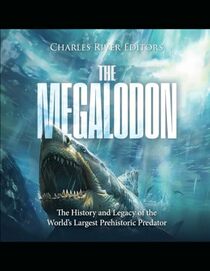The megalodon was a giant, a colossal creature in the same order as the great white shark (but in a different family). It towered over the great white, measuring a staggering 40 ft. long, twice the length of its smaller cousin, and weighing in at a jaw-dropping 5 to 7 tons, up to three times the weight of the great white. With these impressive stats, the megalodon takes the stage, and the authors then delve into the Earth's history.
Having recently delved into THE TRIASSIC PERIOD by the same authors, I was captivated by their exploration of the Earth's history and the intriguing mysteries surrounding the lack of fossils to explain all the dying-offs of animal life and other changes over the centuries.
The story then returns to 200 million years ago, when reptiles were the only significant creatures on Earth. The Earth's surface was very different then, with water in different places. So when people found these huge teeth of the Megalodon, they were baffled by their appearance in areas without water. In 1835, the Megalodon was named, but the Earth has changed over the centuries, and there are not enough fossils or skeletons remaining to show what the huge fish looked like. Since all sharks are made of cartilage instead of bone, they were less likely to have left behind intact skeletons.
According to scientists, the Megalodon lived on Earth for about 20 million years. They were highly successful predators, eating whales, sea lions, and sea turtles. An oddity that the author(s) added is that North Carolina named Megalodon teeth its state fossil. This validates that there was little truth or absolute knowledge about the Megalodon and many pages of supposition. It's mildly interesting.
Having recently delved into THE TRIASSIC PERIOD by the same authors, I was captivated by their exploration of the Earth's history and the intriguing mysteries surrounding the lack of fossils to explain all the dying-offs of animal life and other changes over the centuries.
The story then returns to 200 million years ago, when reptiles were the only significant creatures on Earth. The Earth's surface was very different then, with water in different places. So when people found these huge teeth of the Megalodon, they were baffled by their appearance in areas without water. In 1835, the Megalodon was named, but the Earth has changed over the centuries, and there are not enough fossils or skeletons remaining to show what the huge fish looked like. Since all sharks are made of cartilage instead of bone, they were less likely to have left behind intact skeletons.
According to scientists, the Megalodon lived on Earth for about 20 million years. They were highly successful predators, eating whales, sea lions, and sea turtles. An oddity that the author(s) added is that North Carolina named Megalodon teeth its state fossil. This validates that there was little truth or absolute knowledge about the Megalodon and many pages of supposition. It's mildly interesting.




